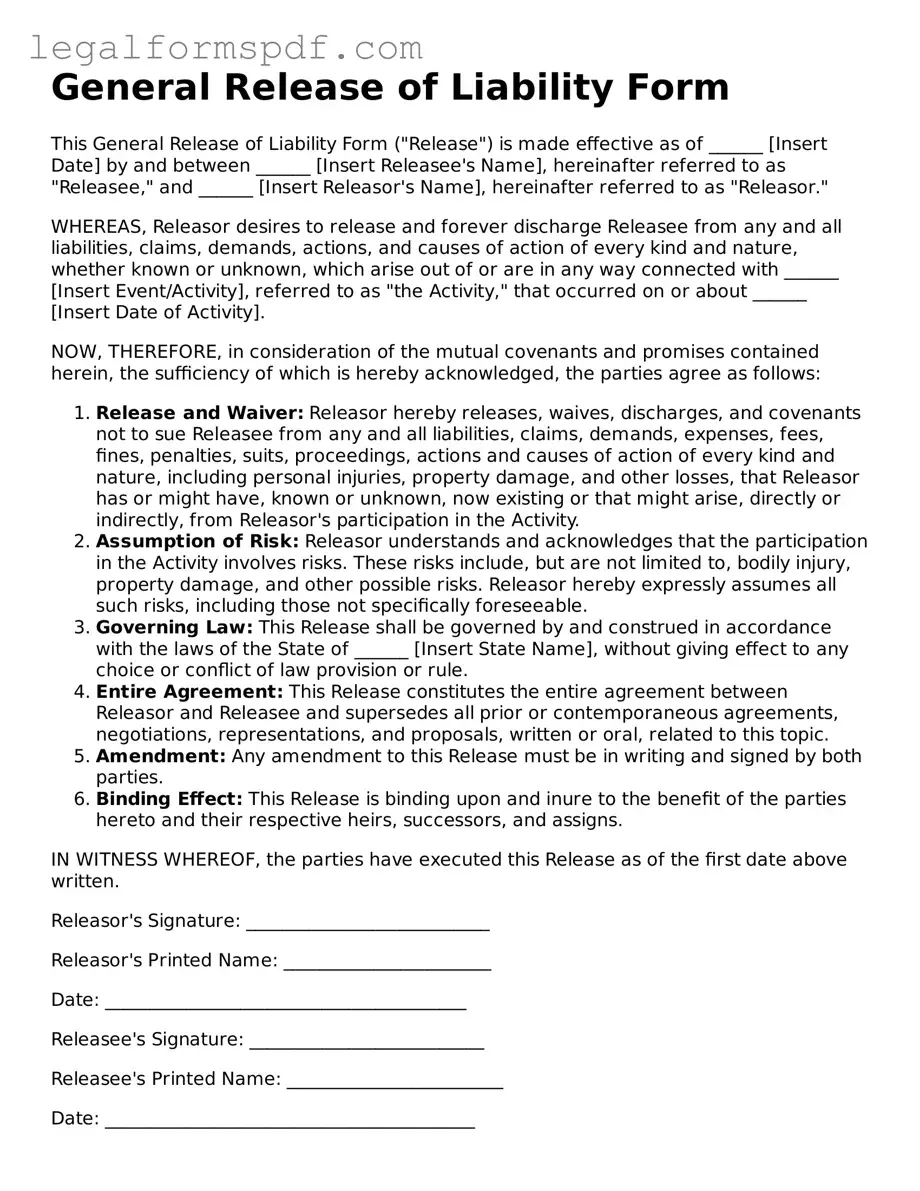What is a Release of Liability form?
A Release of Liability form is a legal document where one party agrees not to hold another party responsible for any risks, including physical risk or property damage, that might occur from participating in an activity. This form is often used in events, sports, and various service-related activities.
When should I use a Release of Liability form?
You should use a Release of Liability form whenever you are organizing activities or providing services that involve a certain level of risk. This includes events like marathons, skydiving, or even less risky activities such as guided tours. It helps protect service providers or organizers from legal claims related to injuries or damages.
How legally binding is a Release of Liability form?
When properly executed, a Release of Liability form is generally considered legally binding and enforceable in a court of law. However, its enforceability can depend on the laws of the specific state where the activity takes place and how the form is drafted. It must be clear, specific, and agreed upon by all parties without any coercion.
Can minors sign a Release of Liability form?
Minors cannot legally sign a Release of Liability form. Instead, a parent or legal guardian must sign the form on the minor's behalf for it to be considered valid. This also applies to activities specifically designed for minors, where a form should be signed by the adults responsible for them.
What information should be included in a Release of Liability form?
A comprehensive Release of Liability form should include the names and contact information of all parties involved, a description of the activity being undertaken, the specific risks associated with the activity, and clear statement indicating that the participant agrees to accept these risks. Additionally, it should include the date of the activity and signatures from all relevant parties.
Does a Release of Liability form need to be notarized?
While not always required, getting a Release of Liability form notarized can help confirm the authenticity of the signatures and strengthen the legal enforceability of the document. The requirement for notarization may vary depending on the nature of the activity and local laws.
What makes a Release of Liability form invalid?
A Release of Liability form may be considered invalid if it's found that the form was signed under duress, fraud was involved, the wording is vague or misleading, or it fails to adhere to state laws regarding liability releases. Additionally, if the participant is a minor and the form wasn’t signed by a parent or guardian, it could also be invalidated.
Can a Release of Liability form protect me from all legal claims?
While a Release of Liability form provides significant protection against legal claims for negligence, it may not provide immunity against claims of gross negligence, intentional misconduct, or other extreme cases. In such instances, the form may not prevent someone from taking legal action.
How long is a Release of Liability form valid?
The validity duration of a Release of Liability form can depend on the terms specified within the document and local laws. Often, it is valid for the specific time period during which the activity takes place. However, some forms may have provisions that extend beyond the date of the actual activity.
Where can I find a template for a Release of Liability form?
Templates for Release of Liability forms can be found online through legal services websites, state government portals, or by consulting with a legal professional who can provide a form tailored to your specific needs and activities. Ensuring the template is up-to-date and compatible with state regulations is crucial.
